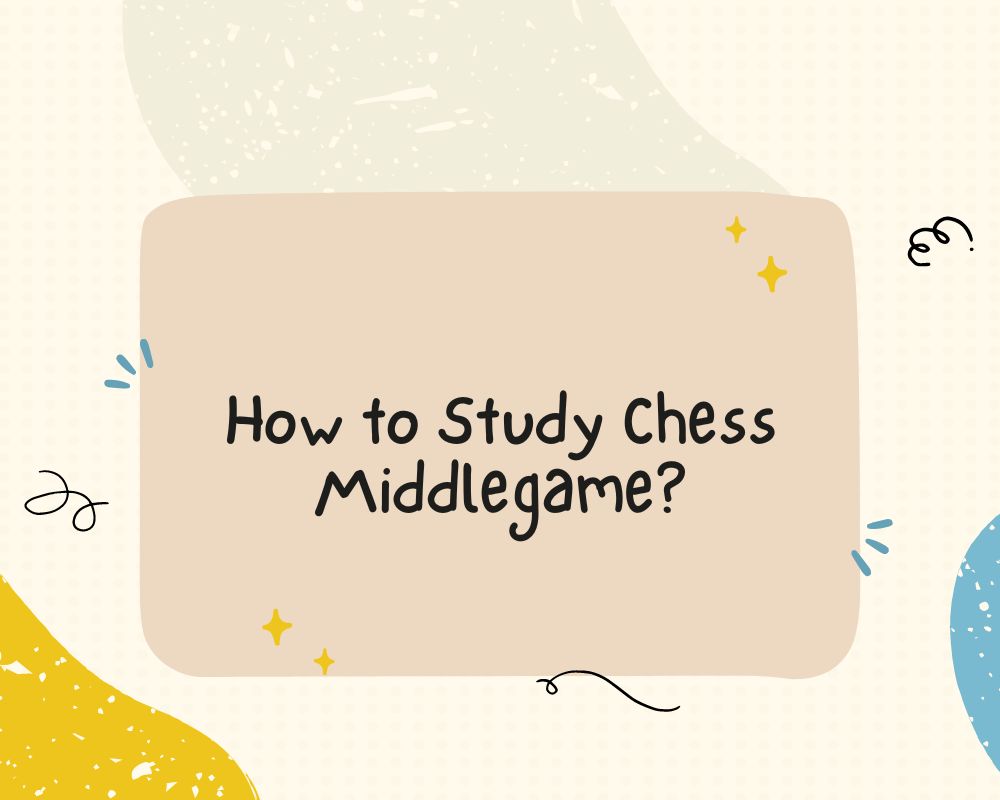How to Study Chess Middlegame?
Chess middlegames are often thought of as the most important part of the game. After all, it’s in the middlegame where most of the pieces are still on the board and where the player has the most opportunities to make strategic decisions that will impact the outcome of the game. In this article, we will see how to study chess middlegame.
Despite the importance of the middlegame, it is often the most difficult phase of the game for chess students to study. The reason for this is that there are simply too many variables to consider at any given time.
There are so many different ways that a middlegame can play out that it can be difficult to know where to start when studying them. The best way to study middlegame is to solve a lot of puzzles and watch top players’ games.
The good news is that there are some things that all chess middlegames have in common. By understanding these commonalities, you can start to see patterns in the middlegame and develop a plan for studying them.
Here are a few tips for how to study chess middlegames:
1. Start with the basics.
Before you start trying to memorize long lines of chess analysis, it’s important to make sure that you understand the basics of the middle game. This means knowing the basic principles of chess strategy and being able to apply them to your own games.
There are a number of good books and articles that can help you with this. One of our favorites is “The Middlegame in Chess” by Jimmy Adams. This book does a great job of breaking down the basics of middlegame strategy and explaining how to apply them to your own games.
2. Study classic games.
One of the best ways to learn about chess middlegames is to study classic games. There is a reason that these games are considered classics after all! By studying the way that masters of the past have played the middlegame, you can start to develop your own understanding of how the middlegame should be played.
There are a number of great books that contain collections of classic games. One of our favorites is “The Mammoth Book of the World’s Greatest Chess Games” by Graham Burgess. This book contains 100 of the greatest chess games of all time, complete with detailed commentary.
3. Analyze your own games.
Of course, it’s not enough to just study the games of other people. You also need to analyze your own games to see where you went wrong and what you could have done better.
This is often the most difficult part of studying the middlegame, as it can be hard to be objective about your own games. However, it is essential if you want to improve your understanding of the middlegame.
One way to make analyzing your own games easier is to use a chess engine. A chess engine is a computer program that can analyze a chess game and tell you the best moves for both sides. This can be a great help when you are trying to find mistakes in your own games.
4. Solve chess puzzles.
Solving chess puzzles is a great way to improve your understanding of the middlegame. By solving puzzles, you can force yourself to think about the best move in a particular position and see how different pieces work together.
There are a number of great chess puzzle books that you can use to improve your skills. One of our favorites is “1001 Chess Puzzles for beginners” by Frank Brady. This book contains 1,001 different middlegame puzzles, ranging from easy to hard.
5. Join a chess club.
One of the best ways to improve your understanding of the middlegame is to join a chess club. At a chess club, you will be able to play games against other people and get feedback on your games from more experienced players.
This is a great way to get better at chess, as you will be able to see how other people play the middlegame and learn from their mistakes. It can also be a lot of fun!
These are just a few of the many different ways that you can study chess middlegames. By following these tips, you can start to develop a deeper understanding of the middle game and improve your chess skills.


